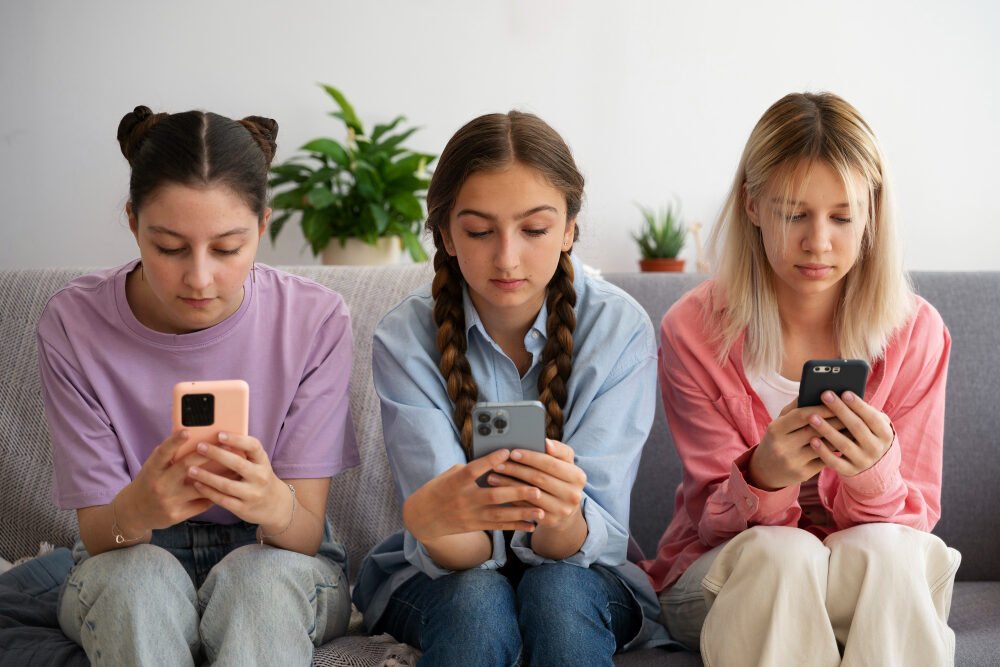Long-Lasting Effects of Social Media: Understanding How Online Misogyny is Affecting Our Youth
Shreya Shukla
March 2024
In recent years, the social media landscape has veered perilously towards misogyny. Far-right influencers like Andrew Tate, championing toxic masculinity and anti-feminist rhetoric among young boys, have been the driving force behind this trend. The post-pandemic era has witnessed a stark increase in misogynistic attitudes on social media, evidenced by the proliferation of sexist attitudes like slut-shaming and jokes undermining women’s capabilities on social media. Moreover, the notion of feminism being intrinsically malevolent, coupled with demeaning stereotypes questioning women’s intelligence and character, has become alarmingly common among social media users. As more and more teenagers interact and absorb such ideologies, we start to see more negative effects on the mental health and behaviors of our youth.

Multiple studies have demonstrated how sexism negatively impacts young girls. Among the many adverse effects, the American Psychological Associate Task Force has detailed decreased cognition, inability to focus, low self esteem, worsened physical and mental health, unrealistic expectations about sexuality, and reductionist beliefs of women as sexual objects as the harmful effects of social media sexism and sexualisation on young girls.[3] Meanwhile, for young boys, social media sexism gives them a false sense of superiority, causes them to internalize gender norms and alpha-male mentality, and decreases their ability to form and maintain meaningful connections with women. In general, sexism has long-lasting and deteriorating effects on young people and reduces their ability to live happy and successful lives.
A new study by the University College London and University of Kent has revealed that social media algorithms are specifically designed to push this material onto young boys and men, who suffer from poor mental health as well as anxiety. According to the Guardian, the researchers “detected a four-fold increase in the level of misogynistic content suggested by TikTok over a five-day period of monitoring, as the algorithm served more extreme videos, often focused on anger and blame directed at women”.[1] The TikTok videos on the “For You” page showed more and more videos featuring objectification, sexual harassment or discrediting women, increasing from 13% of recommended videos to 56%.[2]
Social media companies benefit from online sexism because it generates greater engagement and controversy, leading to people spending more time online on their apps. For young boys and men, it validates their experiences and encourages them to hold sexist beliefs and attitudes and blame women for whatever problems they might be struggling with. Meanwhile, for young girls and women, it feeds their insecurities and undermines their issues, leading to them spending more time trying to defend themselves. In the end, neither gender’s problems are solved, and the only person who benefits from the polarizing gender war is social media.
The revelations of this study suggest a need for greater safeguards as well as accountability for social media companies. These safeguards could include stricter content moderation policies, transparent algorithms, standards for measuring social media, and enhanced reporting mechanisms for harmful content. Transparent algorithms, for instance, would allow social media users to understand how content is curated and enable testing for any bias or discrimination across different demographics. Additionally, the establishment of standards to define and measure sexism on social media would make regulation easier. By implementing these measures, we can strive to create a safer and more inclusive online environment, and protect our youth from the long-lasting effects of sexism.
References:
[1] Weale, S. (2024, February 6). Social media algorithms “amplifying misogynistic content.” The Guardian. https://www.theguardian.com/media/2024/feb/06/social-media-algorithms-amplifying-misogynistic-content
[2] Lane, C. (2024, February 13). Social media algorithms amplify misogynistic content to teens. UCL News. https://www.ucl.ac.uk/news/2024/feb/social-media-algorithms-amplify-misogynistic-content-teens
[3] Ng, S. V., Search for more papers by this author, Dr. Ng is a third-year resident in the Department of Psychiatry, NJ, S., EA, D., LM, W., & B, K. (2017, March 10). Social Media and the Sexualization of Adolescent Girls. American Journal of Psychiatry Residents’ Journal. https://psychiatryonline.org/doi/full/10.1176/appi.ajp-rj.2016.111206





